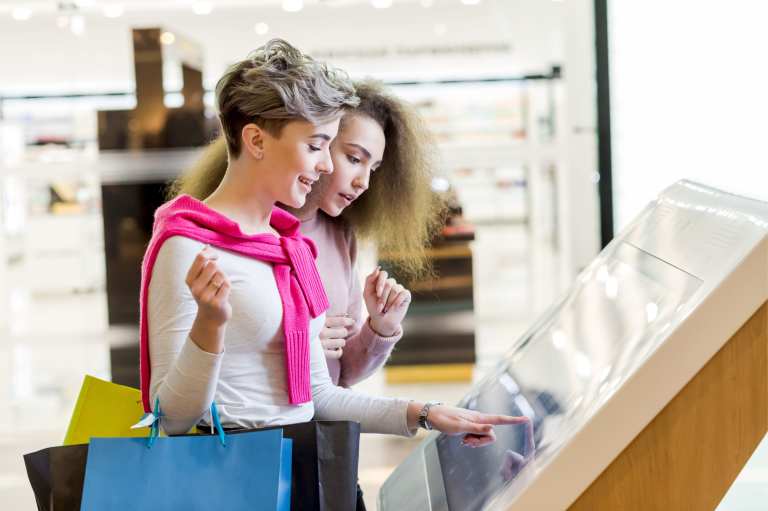
The latest Automated Retail Tracker examines the latest ways supermarkets and other retailers are implementing technologies to provide self-service options and high-speed services.
Kiosk-based shopping experiences may be convenient for consumers, but they also benefit retailers by reducing the amount of floor space needed for checkout — and even merchandise — while reducing the need for sales staff.
Quick, self-service models like kiosks also drive up customer spending, as much as 30 percent more when they order through self-service kiosks as opposed to traditional checkouts.
Demand for Speed Picks Up
Some of these innovations have been driven by businesses trying to reduce labor and real estate costs by shrinking retail footprints and staffing needs. But much of new tech adoption is an attempt to meet customers’ increasing demand to get products sooner. Amazon Prime’s free two-day delivery has put pressure on all competitors.
Sometimes next-day delivery isn’t even enough. That’s why buy online, pick up in store (BOPIS) is gaining steam.
Younger consumers like this purchasing model because it provides the advantages of physical retail (immediate access to goods) alongside the key benefits of ecommerce (ensuring items are in stock and ready). A recent study found that more than half (58 percent) of Generation Z have used BOPIS with nearly two-thirds using it within the last month.
Nearly one-third of consumers say they want their purchases within just a few hours — quicker than they can get them via online shopping.
A mystery shopping study conducted at 10 major U.S. retailers found that stores providing automated pickup — as opposed to staffed pickup — for BOPIS purchases had 28 percent quicker order collection. This quicker order collection can have major results; 60 percent of Generation Z say BOPIS plays a factor in retailer selection.
Behind the Scenes
Much automation innovation is going on behind the scenes to create seamless fulfillment for consumers. Kroger and Ocado are building a 375,000-square-foot automated customer fulfillment center that uses artificial intelligence (AI) and robotics to collect items and fulfill online orders. The companies plan to open 20 similar locations by 2021.
In order to meet customers’ demands for quick delivery, grocery stores and other retail formats need to build fulfillment centers that are close enough to customers but don’t come with high property costs.
Logistics technology startup CommonSense Robotics aims to solve this need by utilizing underused properties like empty storefronts and parking lots.
In addition to same-day delivery, Kroger is also leveraging Ocado’s expertise to test a service called Rush that gets products to customers in less than 30 minutes. While that seems like a tall order, in a small test it was reported that roughly 67 percent of items did arrive under the half-hour mark.
Quick-service restaurants (QSRs) like McDonald’s have bet big on self-serve kiosks. They have also automation consumers can’t see, like a new trial that uses robots to fry food.
New Concepts
The Fitting Room, a small store in a Swedish mall, experimented with selling sneakers and apparel via kiosk from October to November of 2018. Items could be tried on in store and consumers could get more information, browse other offerings and choose and order items at an interactive kiosk.
The store featured a full range of sizes but not colors, which enabled brands to stock smaller inventory to save on costs and floor space.
Retail technology company Vertiseit, which powered this store, reported that the return rate during this test period was around 1 percent while typical Swedish return rates are around 30 percent.
U.S. retailers have been experimenting with self-service pickup. Bell and Howell has launched an automated drive-up and pickup solution for retailers and grocers that has been used by Walmart and can be added to an existing retail building or as a stand-alone structure. Drivers go to a delivery station, scan a QR code sent when an order is ready for pickup and access their groceries in under a minute.
Advances in retail kiosks are related to true automation. Bhushan Mehendale, vice president of engineering for kiosk app management and development platform provider Esper, sees the next stage of self-service kiosks involving the ability for retailers to remotely manage and monitor them.
“I predict a future in which brick-and-mortar stores [will] have kiosks as very essential aspects,” Mehendale said in an interview with PYMNTS.